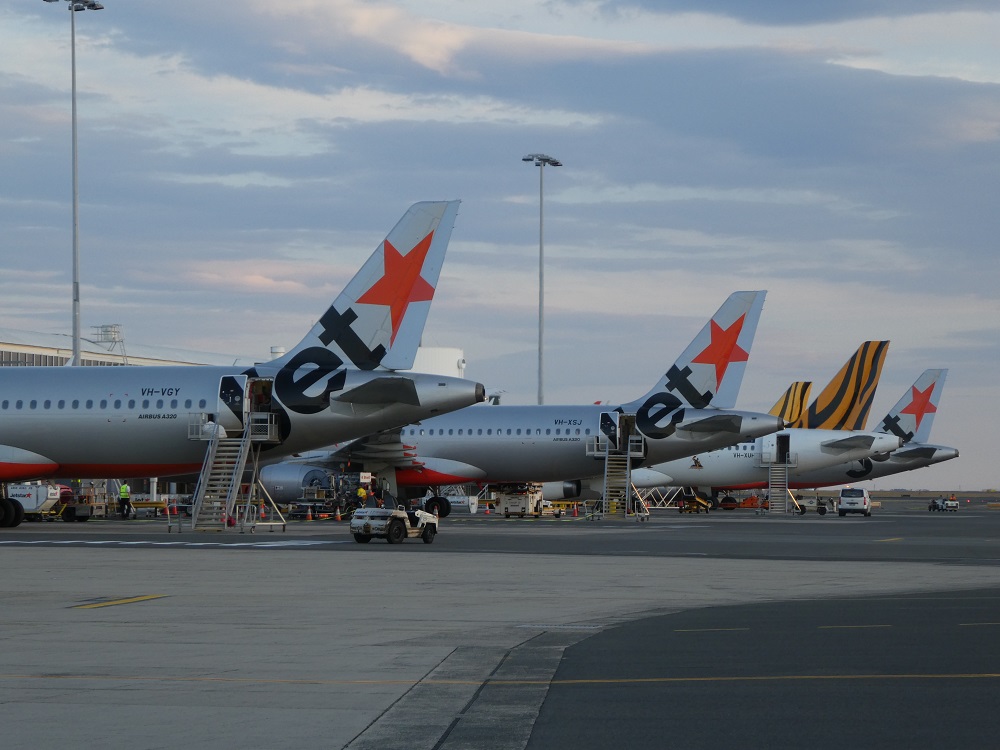Jetstar to get A321neo LRs as Qantas flags interest in NMA
21 February, 2018
5 min read
By joining our newsletter, you agree to our Privacy Policy


QANTAS offshoot Jetstar will receive 18 Airbus A321neo LRs from 2020 that will be able to operate international routes for the low-cost carrier and allow it to expand its overseas network.
But the Australian airline group has also flagged interest in Boeing's proposed twin-aisle New Mid-market Airplane seen as a competitor to the A321neo.
The announcement came as the Qantas Group Thursday revealed a record first-half underlying pre-tax profit of $A976 million, up 15 percent on the same six months last year.
The new Jetstar aircraft, which are 15 percent more fuel efficient than their predecessors and can fly 700kms further, is capable of flying from Australia’s East Coast to the holiday destination of Bali.
They are expected to free up Jetstar Boeing 787s for more flights to leisure routes such as Vietnam, China, Thailand, and Hawaii.
SEE our Ratings for Jetstar and rate them yourself.
All 18 planes are expected to be delivered by the end of 2022 and will replace Jetstar’s oldest A320s.
They are part of an existing order of 99 A320 family aircraft and the airline said it retained flexibility with the remaining deliveries which are roughly evenly split between 232-seat A321neo LRs and 186-seat A320neos.
The order is primarily focused on aircraft replacement but Qantas said there was scope to allow for growth depending on market conditions.
On the NMA - or Boeing 797 as the industry calls it -, Qantas chief executive Alan Joyce said the airline was excited about the potential for the aircraft and was joining other airlines in encouraging Boeing to "get on and make a call''.
Noting that Boeing still has to define the specifications and price of the aircraft, he said it looked like it was being pitched as an aircraft that would work very well in the Australian domestic market.
"It is a lighter aircraft than some of the widebody, twin-aisles that we have today,'' he said. "It has a range that's designed to fly transcontinental and maybe into South-East Asia so it's not over-specked for the domestic operation.
"And it will be very helpful in Sydney as Sydney becomes full in particular.
"We're now at the cap of 80 movements an hour for four or five hours every day already. By 2026, when this aircraft is proposed to be produced, the airport will probably completely full by then.
"So the way to grow will be bigger and bigger gauge aircraft.''
Joyce said what was also exciting about the NMA was Boeing was talking about being able to turn it around in the same time as a 737 which meant Qantas would get good domestic efficiency from it.
READ: Finally an aircraft - the 797 - that all passengers will love
"So if all that's achieved, it's looking like a very, very good aircraft in that space,'' he said. "Having said that, we made the call today to go for the A321s for Jetstar and A321neo long-range aircraft is a very good aircraft as well.
"So we want a competitive dynamic to make a decision on what the medium- to a long-term replacement for the domestic Qantas fleet is and if Boeing decides to produce this aircraft, we'll have alternatives and very competitive alternatives and that would be very exciting for us."
The airline also announced a complete redevelopment of its Sydney international business lounge that would see capacity boosted by 30 percent and an upgrade to the cabins of regional carrier QantasLink’s fleet of 45 turboprop aircraft.
And it is establishing the Qantas Group Pilot Academy to help it cope with future growth.
The airline said it is undergoing the largest pilot recruitment and training initiative in its history, with almost 600 pilots hired since 2016 and another 350 to be recruited by the end of this calendar year.
The academy, to be established in 2019 at a cost of $A20 million, will initially focus on training up to 100 new pilots a year for direct entry into the group.
Joyce said the airline wanted to make sure it had a talent pipeline well into the future and retain its reputation for having some of the best pilots in the world.
He pointed to Boeing estimates the world will need about 640,000 more pilots in the next 20 years, with 40 percent of the demand in the Asia-Pacific.
"Initially, training will be limited to cadets who plan to join the Qantas Group – around 100 a year,'' he said.
"But over time, we see huge potential for the academy to train for the industry more broadly. We have some of the most talented pilots in the world flying for us – so, imagine the demand to have Qantas pilots train others.
"Ultimately, we expect the Qantas Group Pilot Academy to be one of the biggest in the southern hemisphere, capable of producing 500 pilots a year."
The Qantas chief said the airline would be talkiing to Australian states and territories about the location of the academy, what incentive packages they were were prepared to provide as well the facilities that might be available.
Get the latest news and updates straight to your inbox
No spam, no hassle, no fuss, just airline news direct to you.
By joining our newsletter, you agree to our Privacy Policy
Find us on social media
Comments
No comments yet, be the first to write one.

